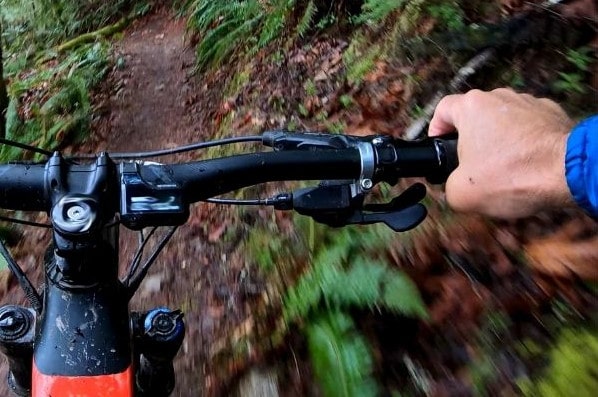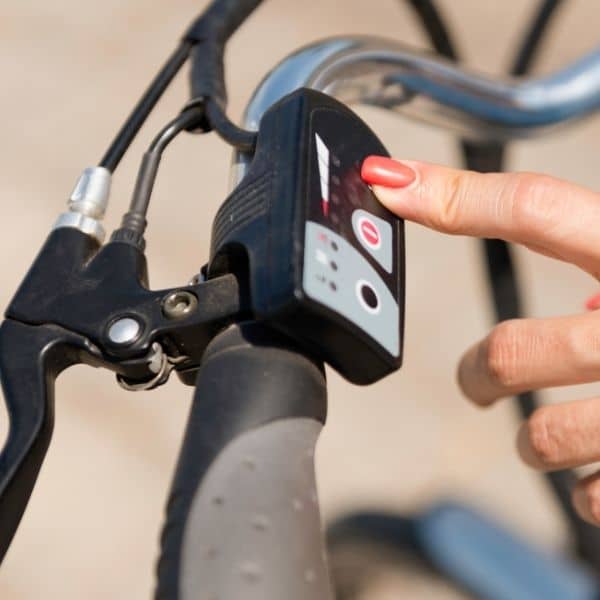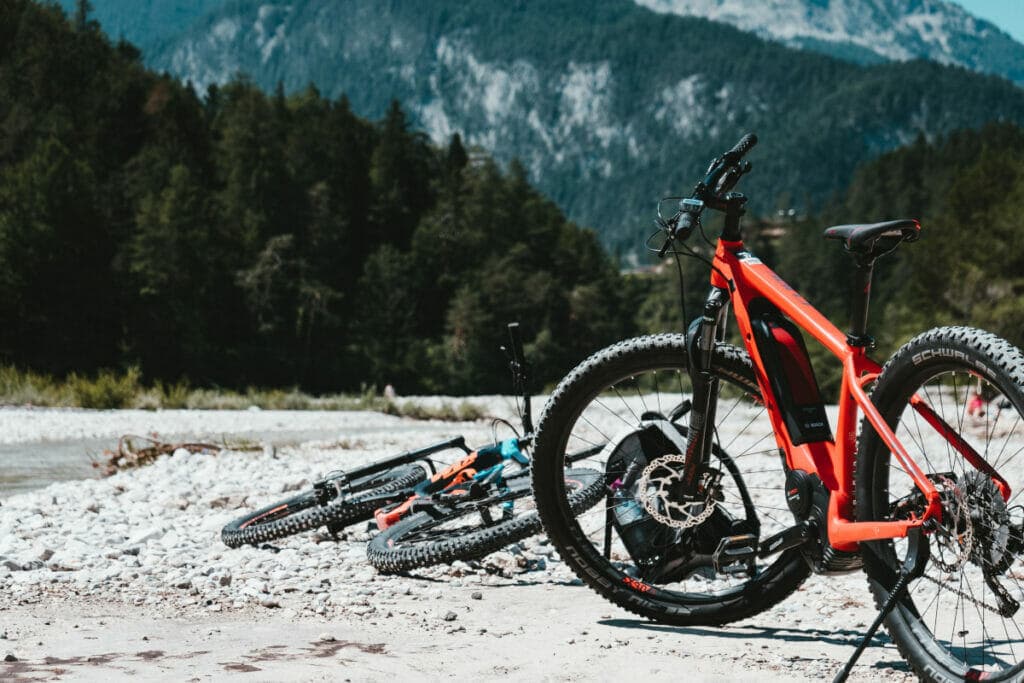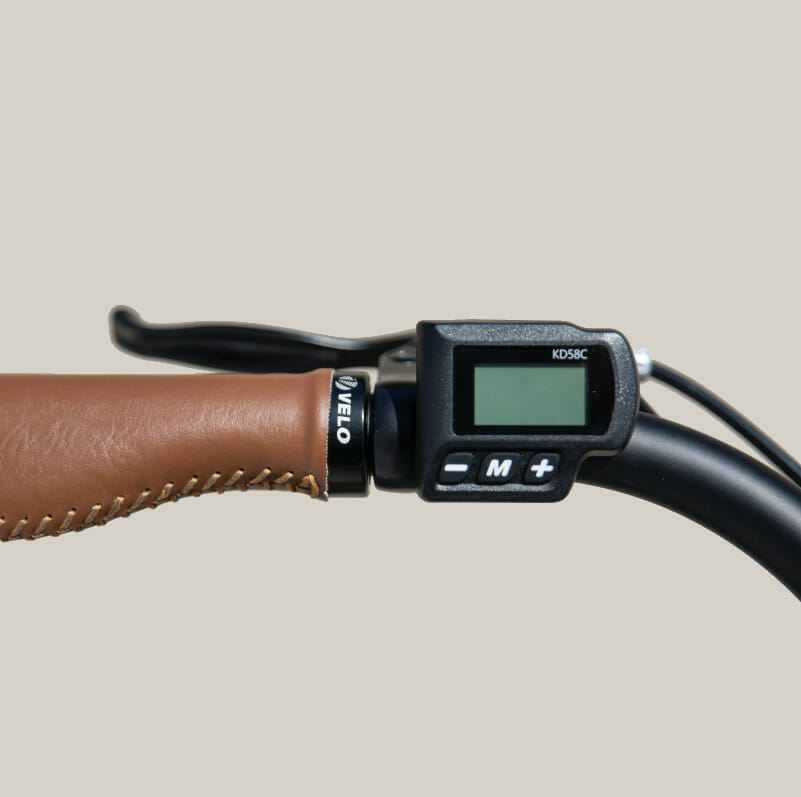Which will you choose, which one will suit you best?
The two main ways of initiating power assistance in an ebike is either with a throttle, usually incorporated in a handlebar grip, or with pedal assistance – a sensor monitors your leg force of the power to the pedals and introduces motor power to ease the strain.
What is an Ebike with a Throttle?
You can compare throttle mode to how a motorcycle operates; when you twist the throttle, more power is applied, or more revs to the engine in a motorcycle, and your ebike will be propelled forward. With a throttle, pedalling is optional, you can help the bike along, or just enjoy the effortless momentum as you cruise along.
Throttles come in a range of options just as everything else. The most popular type though is the twist throttle, similar to a motorcycle or scooter. Another option is the thumb throttle, which is basically a small lever adjacent to the handlebar which you operate with your thumb.

Other types of throttle can be simply a push on, push off switch, or a switch that steps up the power with each press of the button.
See also: Emoped or Ebike, Which Should You Get?
And: What is an Ebike, or an Electric Bicycle?
What is an Ebike with Pedal Assist?
To engage power in a pedal assist ebike, you have to be physically pedalling the cycle. Pedal assist (also known as pedelec) provides power only when you are pedalling. With sensors dictating how much power should be offered up in assistance, pedal assist ebikes can have a more natural feel to them. You feel more in charge of your ride, but the power assistance eases the strain of your efforts. Pedal assist offers more of a symbiotic relationship the rider has with the cycle: the power is applied while you pedal, and consequently, while you pedal, you are also easing the strain on the battery, therefore, with a pedal assist ebike, range should be greater.
The greater the range though will depend on the level of assistance you opt for the motor to give. There are usually several options available as to how much work you want the cycle to do compared to how much exercise you want to have. A common option is three, low, medium, and high assistance, though there may be five or more assistance level choices depending on the type of ebike you have.

What Range of Assistance Do Ebikes Have?
Low Assist Mode
In Low Assist Mode, you have a little assistance as you go along. You will power the cycle more, and exercise more, in this mode. It may even feel almost like you are on a traditional bicycle. Ebike range will be greater also.
Medium Assist Mode
In Medium Assist Mode, it’s like cruising easily along with a strong tailwind at your back. An even balance of power between you and the cycle means you still get a reasonable workout, just that the particular effort involved is mitigated with battery power.
High Assist Mode
In High Assist Mode, get to your destination with minimal effort on your part. No sweating involved here, you are only here for the ride and manipulating the pedals is only to keep the power flowing. It all depends on battery and motor capability, and terrain, how easy your trip will be in high assist mode. With steep hills and a low powered motor, you may still have to exercise. Range will also be shortened in this mode as the battery is utilised more.
What Are Torque and Cadence Sensors?
Modes of assistance are usually input in a display, or with a thumb lever on the handlebar, and the cycle has sensors monitoring the amount of effort you are exerting to decide when and how much power assistance to offer. Sensors commonly come in two types:
Torque Sensors
Torque sensors measure the amount of effort you are exerting through the pedals, and will alter the amount of power assistance based on your efforts. Ride feel is more natural. Torque sensor systems tend to be found on the higher priced ebikes on the market.
Cadence Sensors
Cadence sensor assist systems provide assistance as the bicycle cranks are turning. Cadence systems provide assist based on the setting you have chosen through the display panel switch, this will not alter to match the actual effort you put in, or vary as your exertions vary. Light or hard pedalling the level of assistance is the same.
Throttle or Pedal Assist, or Both?
There are some ebikes that have both modes. Certain models you can use one or the other but not both. Other models you can use pedal assist in the main, and activate the throttle when you feel an additional boost is required.
Your Ebike, Your Choice

Choose an ebike with a throttle if you want the option to pedal or not pedal. You can choose when to exercise, or not at all on a lazy day.
Choose an ebike with pedal assist if you enjoy the exercise you will get as well as the ride. Exercise with less exertion is still exercise, and the more exercise you do, the further distance you can travel for your ebike range will increase.
An ebike with both throttle and pedal assistance may be the best of both worlds. Choose mode on a whim, or use pedal assistance on your outward journey, and cruise back home using the throttle.
Another option is to convert your existing bike into an ebike. This way you can decide to create exactly the ebike you want.
Legislation
As different countries of the world have different legislation surrounding ebikes and their specifications, please check what is permissible and legal wherever you are. In some countries, there are different regulations in place for throttle assist ebikes compared to pedal assist. Above all, follow the law where you reside and enjoy whatever type of ebike you opt for.


Comments are closed.